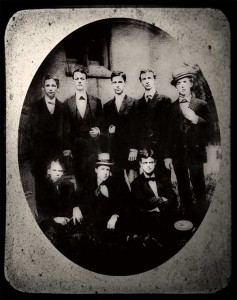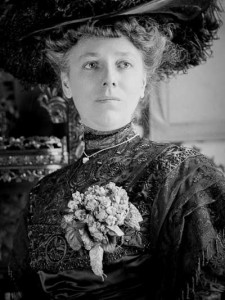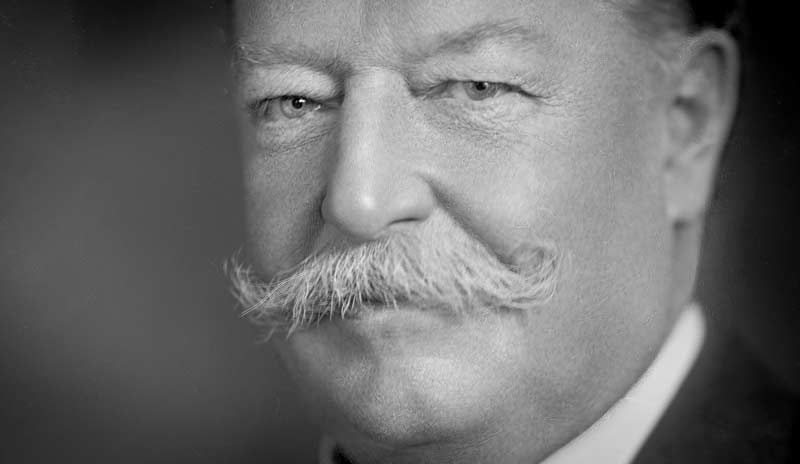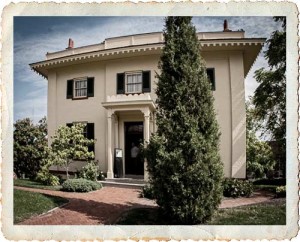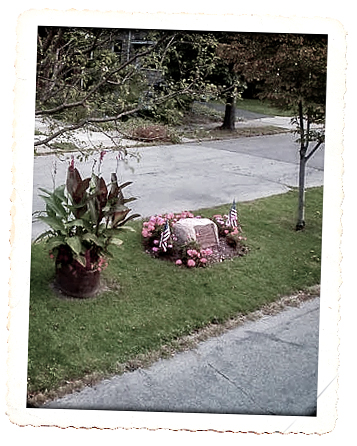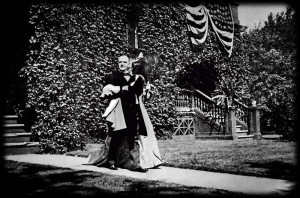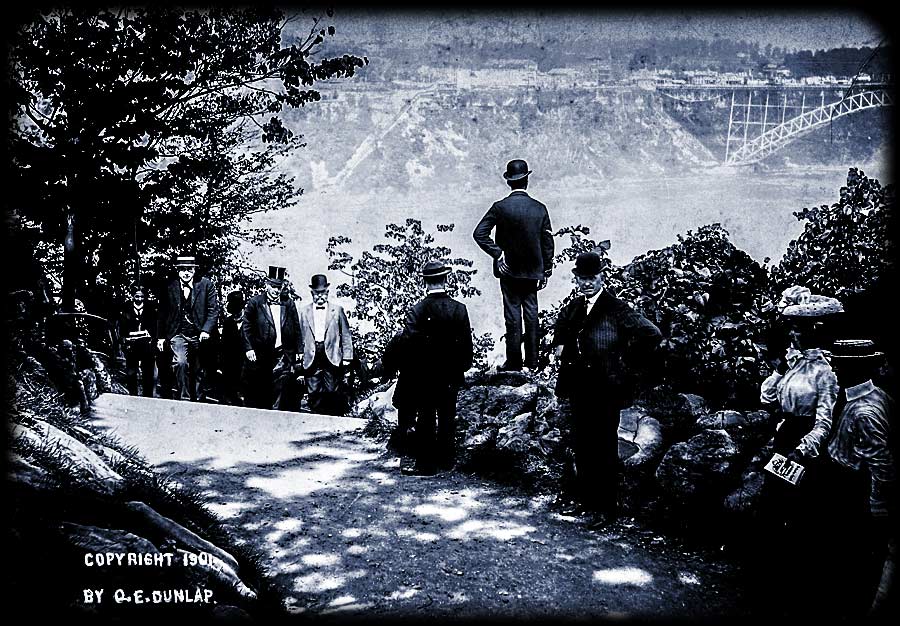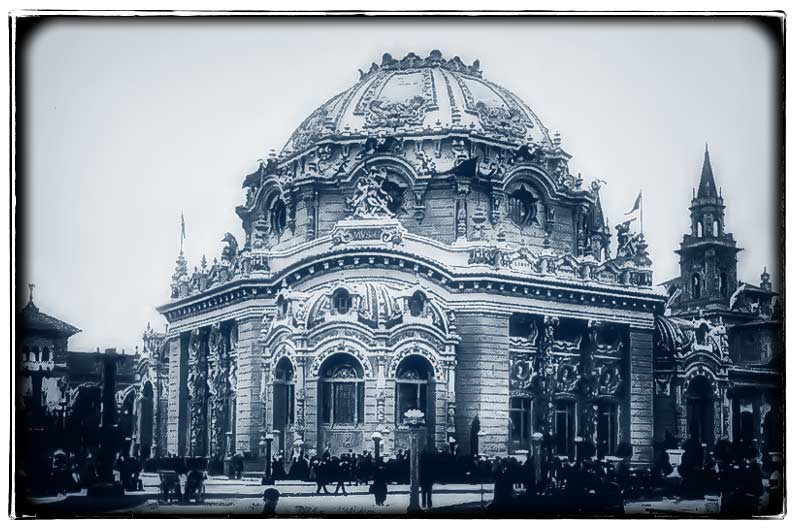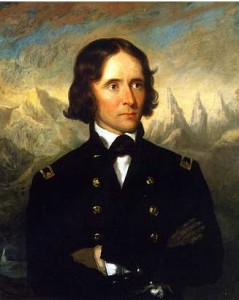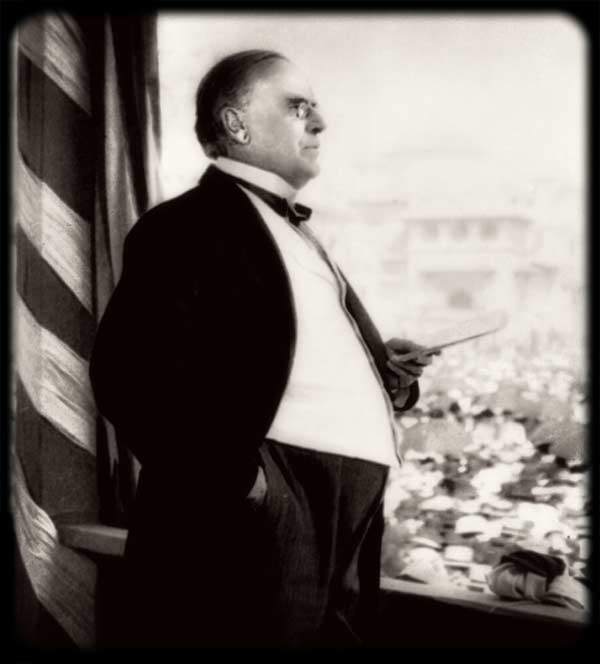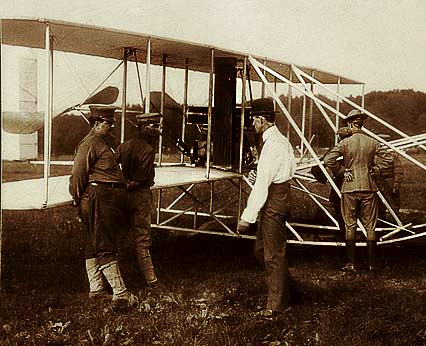
For Katherine Wright, a school teacher at Dayton’s Steele High School and the younger sister of the Wright brothers, it was a normal day. By now she was used to her older brothers being away from the house they all shared with their father. More recently the local papers had been trying to get her to comment on Wilbur’s accomplishments in France. Her brothers had become rock stars in Dayton, but it was still unnerving for her to receive a telegram about one of them.
It had been almost 5 years since the Wright brothers had proven to themselves powered flight was possible. Since then they had been steadfastly improving their flying machine and now they were out to show a doubting world that they could fly.
Wilbur Wright had one of their flying machines in France where he had been conducting almost daily flights before spectators that were arriving by the 1000s to observe how his flying machine could take-off, fly circles and figure 8s then safely land. He had become the iconic fearless American adventurer and entrepreneur.
Back in the United States, his younger brother Orville was doing what he could to prove to the United States military, that what he and his brother had built could be useful for the army. That meant Orville had to go through a series of tests devised by the military before they would award a contract to buy the brothers’ flying machine.
To this point the government had actually gone out of their way not to believe the two brothers without any government help, had built a flying machine unlike any other. However, the Wright brothers finally got permission to demonstrate one of their flying machines for the US Army Signal Corps at Fort Myer.
The first test flight on September 3 ended with a modest crash landing. Orville was bruised slightly, and the plane received some damage, but nothing that couldn’t be fixed in short order. The following day the plane was again ready to fly and so was Orville. This time everything went as planned. It was the beginning of a series of flights that suddenly grabbed the attention of the American public when accounts of the secret test flights became known. Suddenly it was no longer a few dozen spectators watching Orville, but a few thousand that waited often days to see what the young inventor would do with his flying machine. On September 10, Orville kept his machine in the air for over an hour. The next day members of congress ventured across the Potomac River to see for themselves what all the talk was about. On this day Orville exceeded his previous record from the day before. The following day another record was set. Orville Wright became a household name around the world.
The test flights continued and the crowds grew even larger.
On this day, Thursday, September 17 the conditions were almost perfect. Orville had already taken up several passengers in the preceding days. Today he would do the same.

Lieutenant Thomas Selfridge who had also been designing both lighter than air dirigibles and heavier than air craft wanted to go aloft with Orville to see for himself how this flying machine handled (Selfridge’s craft he had designed had crashed earlier that spring).
The flying machine lifted off the ground at 5:14 P.M., but the Wright’s machinists noticed the plane did not rise as quickly from the ground as it had on previous two-manned flights. They would later find that the lieutenant weighed 175 pounds, much more than any of the other co-pilots that flew in the previous flights. This additional weight was perhaps enough to cause more strain on the engine and the spruce propellers. There was also a 6 mph headwind.
Once airborne, the flight appeared to be going as expected. Orville and Thomas Selfridge successfully completed three wide circles to the cheers from the large crowd below them. On the fourth, one of the mechanics noticed something fall from the plane. Just before that, Orville turned to look back. There had been a slight thump but he couldn’t see anything amiss. Not wanting to take any unnecessary risks, Orville slowed the engine and began a descent to land.
Just as he began the descent, there were two loud thumps and the machine quickly began vibrating. Orville turned the engine off and tried to make a glide landing, something he was familiar with. However, Orville not fully realizing all that had just happened wasn’t aware that the left propeller had literally exploded and sheered off part of the strut making the machine unable to be controlled. This was the first time those particular propellers were used.
No matter how hard Orville pulled the levers, the machine did not respond. It suddenly turned to the right and then dove directly toward the ground. Both Orville and Thomas were thrown forward from their seats with parts of the flying machine crashing around them.

Mounted soldiers tried to keep the crowd back and away from the wreckage that was leaking gasoline from the punctured fuel tank. Lieutenant Thomas Selfridge was unconscious and Orville was semi-conscious. A doctor at the field said both men were in critical condition as they were removed by stretcher and taken to the Fort Myer infirmary at the other end of the field. Without ever regaining consciousness, Lieutenant Selfridge died that evening.
When Orville regained consciousness in the hospital, he dictated a telegram that was to be sent both to his brother Wilbur in Le Mans France, and his sister Katherine. He wanted to assure them that he was alive. Orville Wright remained in serious condition for the next week. When Katherine received the telegram she immediately contacted the Steele High School principal that she would need to take an extended leave of absence. Katherine arrived two days at Fort Myer and would remain with him until he was well enough to make the train ride back to Dayton in November.
On this day in 1908, Lieutenant Thomas Selfridge became the first person to die in a crash of a powered airplane. After this accident, the Army insisted all test pilots where helmets which would most likely have saved Selfridge’s life in this particular accident. When Wilbur Wright was notified of Orville’s accident, he stopped flying for a few days and then decided to continue his test flights in France, but instead of having a passenger, he flew with a sack of sand as his co-pilot.
